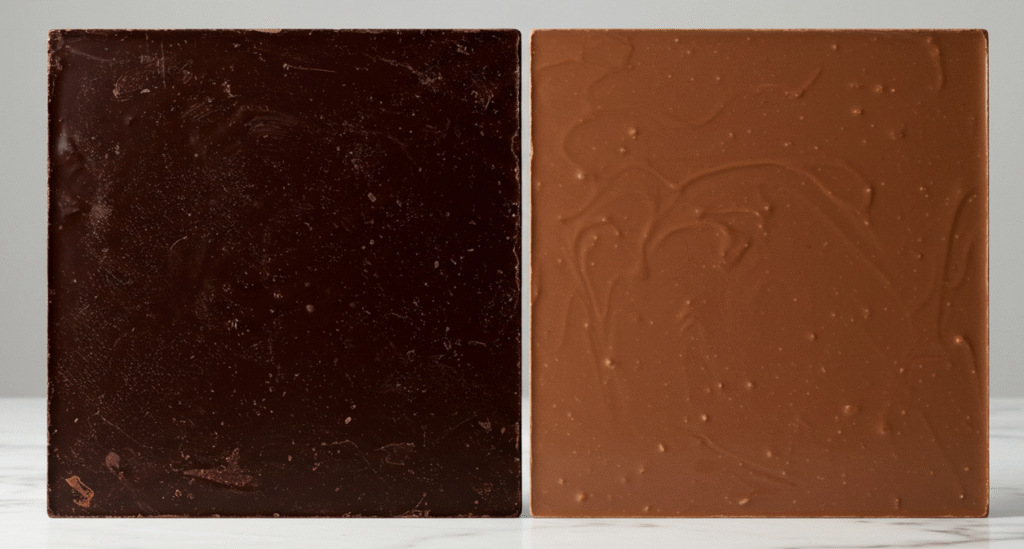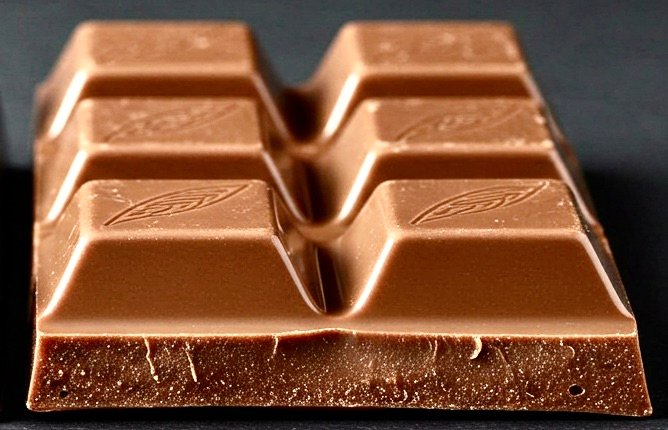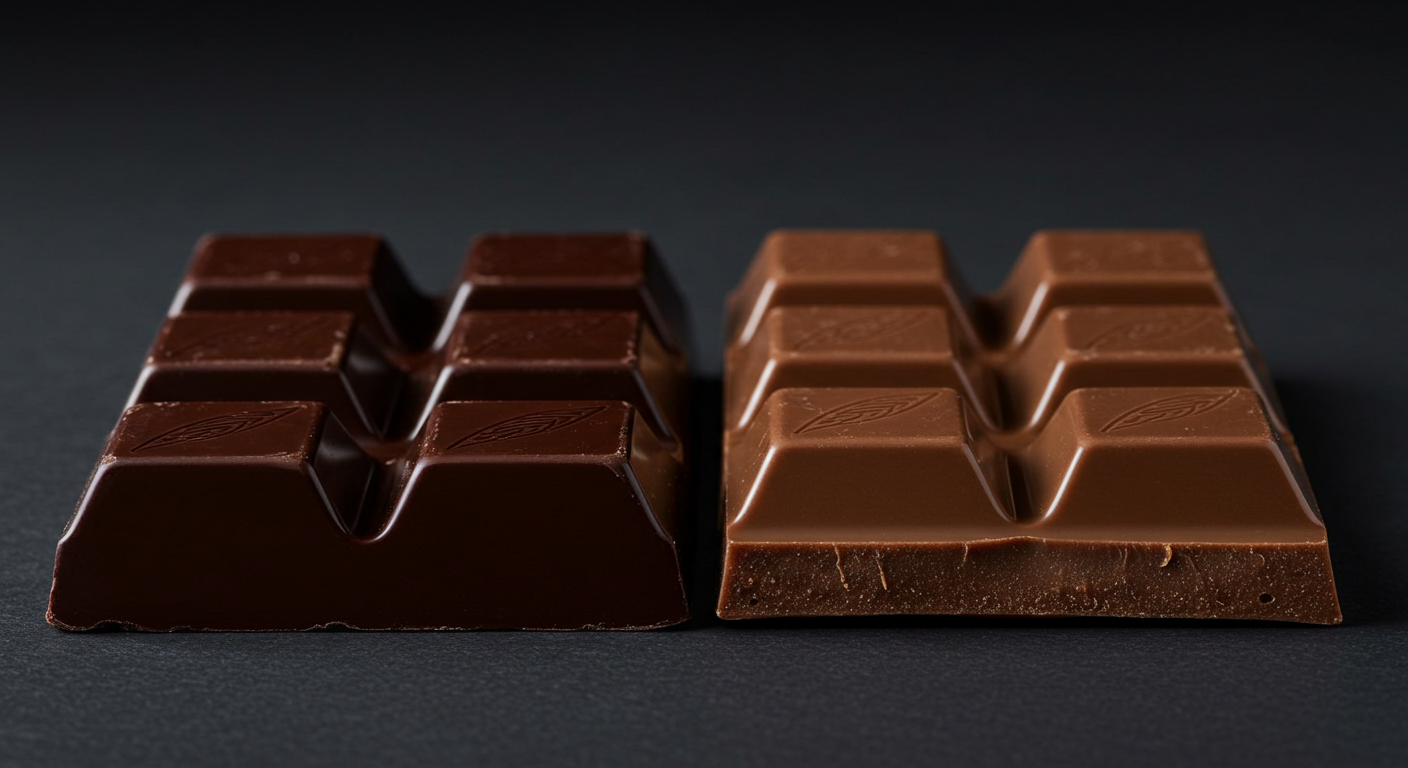Dark vs. milk chocolate
Chocolate is more than just a treat—it’s a global obsession. From rich, bold dark chocolate to smooth and creamy milk chocolate, people have strong opinions about which is best. But when it comes to health, is one type of chocolate better than the other?
The debate of dark vs. milk chocolate isn’t just about taste. Each has a unique nutritional profile, benefits, and drawbacks. If you’ve ever wondered whether you should be reaching for a square of dark chocolate or indulging in milk chocolate, this article will give you the full scoop.
Dark vs. Milk Chocolate: : What’s the Difference?
Before we dive into health, let’s break down how dark and milk chocolate are made.
- Dark Chocolate → Contains 50–90% cocoa solids, cocoa butter, and sugar. It has little to no milk solids. The higher the cocoa content, the less sweet (and more bitter) it tastes.
- Milk Chocolate → Typically contains 10–50% cocoa solids, cocoa butter, sugar, and milk powder or condensed milk, which makes it creamier and sweeter.
The main difference: dark chocolate has more cocoa and less sugar, while milk chocolate has more sugar and milk.
Nutritional Comparison: Dark vs. Milk Chocolate

Here’s a side-by-side look (per 100g serving, averages from USDA):
| Nutrient | Dark Chocolate (70–85% cocoa) | Milk Chocolate |
|---|---|---|
| Calories | ~600 | ~535 |
| Fat | 43g | 30g |
| Saturated Fat | 25g | 19g |
| Carbohydrates | 46g | 59g |
| Sugars | 24g | 52g |
| Fiber | 11g | 2g |
| Protein | 8g | 7g |
| Iron | 11.9mg (66% DV) | 2.4mg (13% DV) |
| Magnesium | 230mg (58% DV) | 63mg (16% DV) |
Key takeaway: Dark chocolate has less sugar, more fiber, and more minerals like iron and magnesium. Milk chocolate, while lower in calories, has much more sugar.
Health Benefits of Dark Chocolate

Dark chocolate often steals the spotlight when it comes to health—and for good reason.
1. Antioxidant Powerhouse
Dark chocolate is rich in flavonoids and polyphenols, antioxidants that help reduce inflammation and fight free radicals.
2. Heart Health
Studies show dark chocolate may help lower blood pressure, improve circulation, and reduce heart disease risk when eaten in moderation.
3. Brain Function
The caffeine and theobromine in dark chocolate can improve focus and memory, while flavonoids enhance blood flow to the brain.
4. Blood Sugar Balance
While it contains some sugar, dark chocolate can improve insulin sensitivity, potentially reducing diabetes risk over time.
5. Nutrient-Rich
A small serving is packed with iron, magnesium, copper, and zinc—key minerals for energy, muscle, and immune health.
For more details, check out our guide: Is Dark Chocolate Really Healthy? 10 Proven Benefits from Science
Health Benefits of Milk Chocolate

Milk chocolate often gets a bad rap, but it does have some benefits too.
1. Calcium from Milk
The added milk contributes a small boost of calcium, which supports bone health.
2. Mood & Comfort Food
Its creamy sweetness can boost serotonin and endorphins, helping improve mood and reduce stress.
3. Easier for Beginners
For people who find dark chocolate too bitter, milk chocolate offers a more palatable entry point—and still provides some cocoa flavonoids.
The Downsides
No treat is perfect. Here’s where each falls short:
Dark Chocolate
- Higher in fat and calories.
- Too much (especially >85% cocoa) can taste bitter, discouraging regular consumption.
- May contain more caffeine—an issue for sensitive people.
Milk Chocolate
- Much higher in sugar → linked to weight gain, insulin resistance, and cavities.
- Lower cocoa content means fewer flavonoids and health benefits.
- Often highly processed with additives.
Dark vs. Milk Chocolate: Which Is Better for Health?
If we’re judging purely on nutritional value and long-term health benefits:
Dark chocolate wins.
Its higher cocoa content, lower sugar levels, and rich nutrient profile make it a better choice for heart health, brain function, and overall wellness.
But—don’t write off milk chocolate completely. If eaten in moderation, it can still be part of a balanced lifestyle, especially when chosen with quality ingredients.
How to Choose the Healthiest Chocolate
Whether you go dark or milk, keep these tips in mind:
- Check cocoa percentage → Aim for 70%+ for health benefits.
- Watch sugar levels → Less sugar = healthier.
- Avoid unnecessary additives → Palm oil, artificial flavors, or fillers aren’t your friends.
- Portion control → Stick to 20–30g (1–2 squares) per day.
Best Uses for Dark vs. Milk Chocolate
- Dark Chocolate → Perfect for baking brownies, health-conscious snacks, or enjoying on its own.
- Milk Chocolate → Works beautifully in desserts like cookies, cakes, and creamy drinks.
Dark vs. milk chocolate
Try our recipe: The Best Chocolate Chip Cookies: Tested, Perfected & Approved (we recommend mixing dark + milk chips for ultimate flavor).
Our Authority Sources
To give you the most accurate, science-backed insights, we consulted:
- Harvard Health: Chocolate and Diabetes
- Cleveland Clinic: The Health Benefits of Dark Chocolate
- National Library of Medicine: Flavonoids and Health

Dark vs. Milk Chocolate:
So, dark vs. milk chocolate: which is healthier?
If your goal is health and nutrition, dark chocolate is the clear winner thanks to its high cocoa content, antioxidants, and mineral richness. But if your goal is pure enjoyment, there’s no harm in savoring milk chocolate occasionally—just keep portions small and choose quality brands.
At the end of the day, the best chocolate is the one you enjoy, as long as it fits into your balanced lifestyle. And here at ChocoTalks.com, we’ll keep exploring the delicious, surprising, and healthy world of chocolate—one square at a time.
